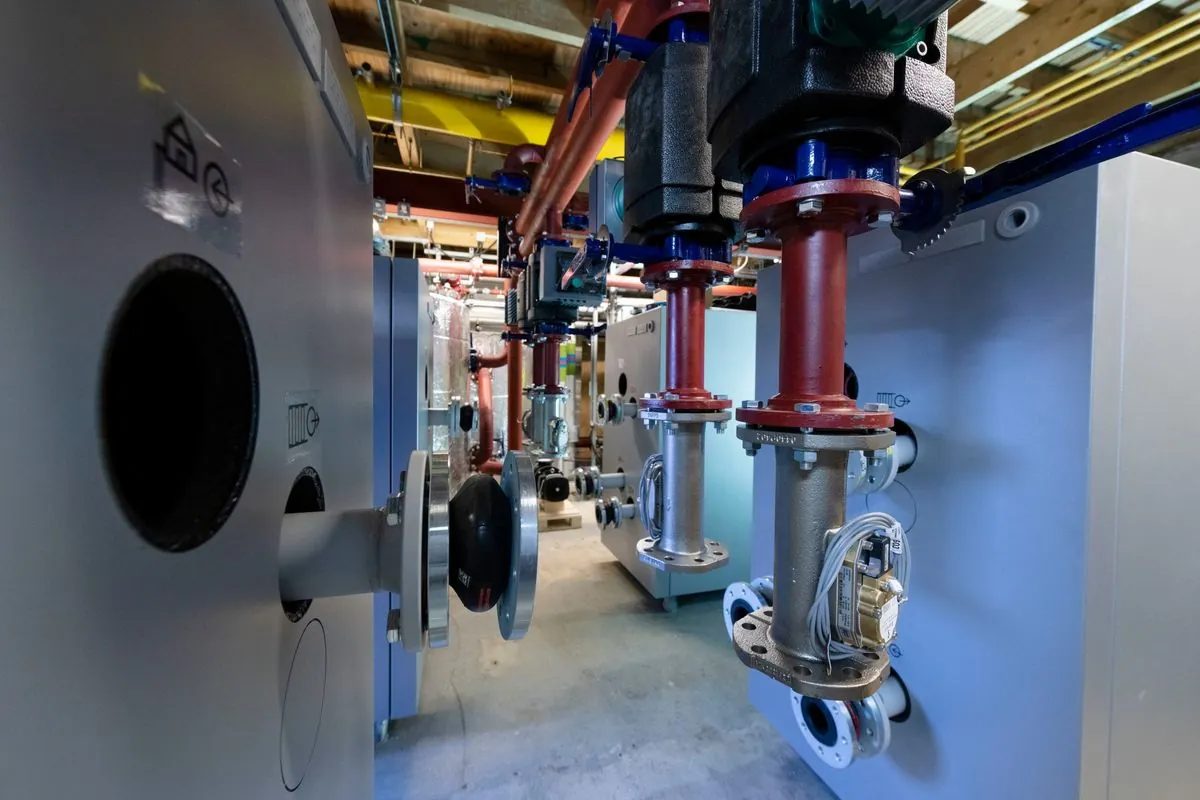St. Paul School's Geothermal Upgrade Tackles Heat and Health Issues
Johnson Senior High School in St. Paul installs ground source heat pump, addressing overheating and improving student comfort. The move reflects growing interest in geothermal systems for schools amid climate change concerns.

Johnson Senior High School in St. Paul, Minnesota, has taken a significant step towards improving its learning environment by installing a ground source heat pump cooling system. This upgrade, completed in the fall of 2023, addresses longstanding issues of overheating and student discomfort that had plagued the school for years.
Rebecca Randall, the school nurse, recalls the challenges faced before the installation. Students would frequently visit her office complaining of headaches and feeling overheated, even when temperatures in the nurse's office reached 85°F (29.4°C). The new system has dramatically improved conditions, reducing the number of heat-related health issues among students.
The installation of the ground source heat pump at Johnson Senior High School is part of a growing trend in the United States. According to Jack DiEnna, founder of the Geothermal National & International Initiative, interest from K-12 schools in these systems is "off the charts." This surge in popularity can be attributed to several factors, including the system's energy efficiency and environmental benefits.
Ground source heat pumps, first patented in 1912 by Swiss engineer Heinrich Zoelly, utilize the earth's constant underground temperature to heat and cool buildings. The U.S. Environmental Protection Agency has recognized these systems as the most energy-efficient and environmentally clean heating and cooling option available. They can reduce energy consumption by up to 50% compared to traditional HVAC systems and decrease greenhouse gas emissions by up to 70%.
The Inflation Reduction Act has further incentivized schools to adopt this technology by offering a 30% reimbursement on installation costs. This financial support acknowledges the systems' efficiency in cooling air while using minimal electricity.

The impact of the new system at Johnson Senior High School has been significant. Tom Parent, former executive director of operations and administration at Saint Paul Public Schools, described the air conditioning as a "game-changer." The school was able to host summer classes for the first time in 2023, providing a comfortable learning environment during the hottest months.
The installation of ground source heat pumps in schools reflects a changing perception of educational facilities in the face of climate change. Timothy Unruh, executive director of the National Association of Energy Service Companies, notes that schools are increasingly expected to provide cool air during heat waves and serve as emergency shelters during extreme weather events.
This shift is particularly crucial for students from lower-income backgrounds. At Johnson High, where 85% of students qualify for free or reduced-price lunches, the school often provides the only access to clean, cool air. Randall emphasizes the importance of this, especially for students living in multigenerational households with limited cooling options.
The health benefits of improved temperature control in schools are significant. Children are more vulnerable to extreme heat than adults, and those with pre-existing health conditions are particularly at risk. Erica Smithwick, a geography professor at Penn State and member of Science Moms, highlights the impact of heat on children's ability to learn and their overall well-being.
"To a kid, it's really hard. You don't have the power to move to a different space to cool down, you're really at the mercy of the environment that you're in."
Ground source heat pumps offer additional benefits beyond temperature control. They can improve air quality by pairing with highly efficient air filters, reducing exposure to traffic-related air pollution. This is particularly important for schools located near major roadways, where children may be exposed to elevated levels of pollution.
While the initial installation cost of ground source heat pump systems can be 2-3 times higher than conventional systems, their longevity and efficiency make them a sound investment. Inside components can last up to 25 years, while ground loops can function for over 50 years.
As climate change continues to impact our environment, more schools will likely follow Johnson Senior High School's lead in adopting innovative cooling solutions. The success of this installation demonstrates the potential for ground source heat pumps to create healthier, more comfortable learning environments for students across the country.


































